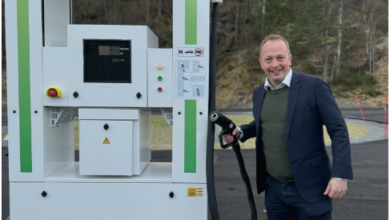SoCalGas partners Sierra Northern Railway to develop hydrogen fuel cell switcher rail locomotive
The project is likely to have a lasting impact on the hydrogen fuel cell locomotive both locally and globally.

Southern California Gas Company (SoCalGas) will work with Sierra Northern Railway, Gas Technology Institute (GTI), Ballard Power Systems and other experts to develop and test a zero-emission hydrogen fuel cell engine for a switcher locomotive.
Project demonstrations will take place on Sierra Northern Railway’s short-line operations, which serve the railyard and seaport in West Sacramento. Sierra Northern Railway and GTI will partner with other team members to build and test the train engine.
The other experts include Ballard Power Systems, Sacramento Metropolitan Air Quality Management District, UC Davis Institute of Transportation Studies, Railpower Tech LLC, OptiFuel Systems LLC, Valley Vision, Velocity Strategies, and Frontier Energy.
Sierra Northern Railway proposes to retire a high-emission Tier 0 diesel locomotive engine and replace them with hydrogen-powered and advanced battery and systems control technologies. The new zero-emissions switcher locomotive will displace up to 10k gallons/year of conventional diesel fuel by using hydrogen fuel, eliminating over 100 metric tonnes of carbon dioxide.
California Energy Commission also selected the project for funding and awarded Sierra Northern Railway and GTI nearly $ 4 million to design and demonstrate the train in Sacramento, whereas SoCalGas is committing another $500,000 to advance the research.
Switcher locomotive is a type of engine for trains that carry goods from ports to nearby warehouses. Developing a fuel cell engine for these trains would potentially eliminate their emissions. The issue of warehouse-related air pollution remained a focal point this month when the air quality regulators at the South Coast Air Quality Management District (SCAQMD) adopted a rule to reduce nitrogen oxide (NOx) and diesel particulate matter emissions from diesel trucks serving distribution centres. Warehouses larger than 100,000 square feet can choose to directly reduce emissions from their operations or pay a mitigation fee to fund technologies and projects that reduce air pollution in nearby communities.
Neil Navin, SoCalGas VP of Clean Energy Innovations, said, “This research is just part of our efforts to lead the transition to clean fuels in California and it supports our commitment to achieve net-zero greenhouse gas emissions in our operations and delivery of energy by 2045.”
Kennan H. Beard III, President of Sierra Northern Railway, said, “This demonstration will facilitate the improvement of local air quality, a reduction in greenhouse gas emissions, noise, and odor for those communities that live near ports throughout California.”
Michael Faust, President of Velocity Strategies and lead project consultant for Sierra Northern Railway, said, “It will further demonstrate how locomotives across the state can shift to hydrogen fuel cell technology and be a part of clean energy solutions.”
Ted Barnes, Director of R&D at GTI, said, “Hydrogen fuel cell technology for locomotives is a clear path forward in the future, as it provides a safe, responsible and efficient energy alternative.”
Lewis Fulton, Director of Sustainable Transportation Energy Pathways at University of California Davis, added, “Not only will the West Sacramento communities near the railway benefit from Sierra Northern Railway’s build and demonstration, but this research could also have a lasting, wide-scale effect on the rail industry’s future as a whole.”
Tim Sasseen, Market Development Manager at Ballard Power Systems. “We are thrilled to be part of the technical team moving this clean energy research forward in the rail industry. We are confident it will drive positive change that will make a real difference for generations to come.”
